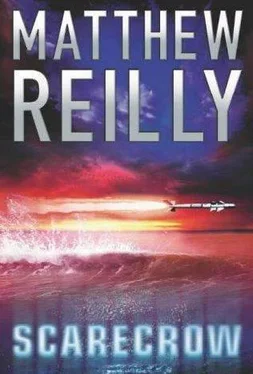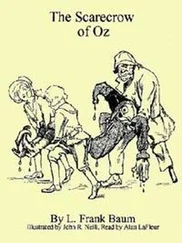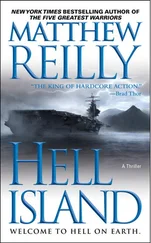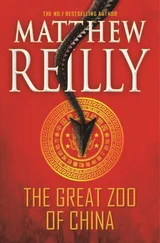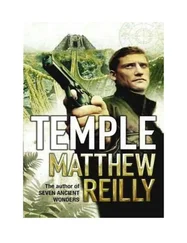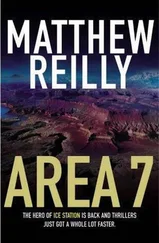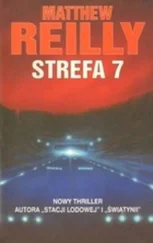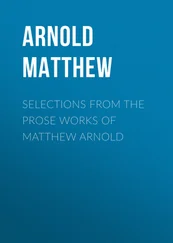'Yemen?' Rufus said.
'It borders Saudi Arabia to the south. Very close to Mecca,' Knight said.
'Yemen . . .' Schofield said, thinking fast. 'Yemen . . .'
At some time today, he had been told about Yemen, had heard of something inside Yemen—
He remembered.
'There's a Krask-8 clone in Yemen,' he said.
He'd heard it right at the start of all this, during his briefing on Krask-8. During the Cold War, the Soviets had constructed land-based ICBM facilities identical to Krask-8 in their client states—states like Syria, the Sudan, and Yemen.
Schofield's mind raced.
Krask-8 had been owned by the Atlantic Shipping Company. David Fairfax had discovered that earlier today.
And the Atlantic Shipping Company —he now knew— was a subsidiary of Axon Corp.
'Goddamn,' Schofield breathed. 'Rufus: set a course heading due south-east and give it everything you've got. Afterburners all the way.'
Rufus looked doubtful. 'Captain, I don't mean to be rude, but even flying at full speed, there's no way we can get from here to Yemen inside of two hours. That's a 6,000-kilometre trip, which is at least four hours travel time. Besides, on full burn, we'll chew up all our gas before we even reach the French Alps.'
'Don't worry about that,' Schofield said. 'I can arrange for fuel to be delivered in flight. And we're not going all the way to Yemen in this bird.'
'Whatever you say,' Rufus said. He banked the Raven, directed her south-east, and hit the afterburners.
While this was happening, Schofield keyed his satellite mike. 'Mr Moseley. You still with us?'
'Sure am,' came the reply from London.
'I need you to do an asset search on a company for me. It's called the Atlantic Shipping Company. Search for any land holdings that it has in Yemen, especially old Soviet sites.
'I also need two more things. First, I need express passage across Europe, including several mid-air refuellings. I'll send you our transponder signal.'
"Okay. And the second thing?'
'I need you to fuel up a couple of very special American planes for me. Planes that are currently at the Aerostadia Italia Airshow in Milan, Italy.'
The next thirty minutes went by in a blur.
Around the world, an array of forces sprang into action.
THE ARABIANSEA
OFF THE COAST OF INDIA
26 OCTOBER,2105 HOURS LOCAL TIME
(1205 HOURS E.S.T USA)
The supertanker MV Whale hovered off the coast of India on a languid sea, the giant vessel seemingly gazing at the shared coastline of India and Pakistan, its missiles ready to fire.
It never saw the Los Angeles-class attack submarine approach it from behind, two miles away.
Likewise, the African commandos in its control tower never saw the sub's torpedoes on their scopes until it was too late.
The two Mark 48 torpedoes hit the Whale together, blasting open its flanks with simultaneous explosions, sinking it.
THE TAIWAN STRAITS INTERNATIONAL WATERS BETWEEN CHINA AND TAIWAN 0110 HOURS (27 OCT) LOCAL TIME(1210 HOURS E.S.TUSA, 26 OCT)
The MV Hopewell suffered a similar fate.
Parked inconspicuously in a sealane in the middle of the Taiwan
Straits, not far from a long line of supertankers and cargo freighters, it was hit by a pair of wire-guided American Mark 48 torpedoes.
Some night-watchmen on other ships claimed to see the explosion on the horizon.
Radio calls to the Hopewell went unanswered and by the time anyone got to its last known location, there was nothing there.
The Hopewell was gone.
No-one ever laid eyes on the submarine that sank it. Indeed, the US Government would later deny that it had any 6881s in the area at the time.
WEST COAST, USA
NEAR SAN FRANCISCO
26 OCTOBER, 0912 HOURS LOCAL TIME
(1212 HOURS IN NEW YORK)
Inside the vast missile hold of the Kormoran-class supertanker Jewel, covered by twelve United States Marines and standing over the bodies of a dozen dead African commandos, David Fairfax plugged his satellite uplink into the vessel's missile control console.
The satellite signal shot up into the sky and bounced over to Schofield in the Black Raven, flying over France, heading for Italy.
And while Schofield disarmed the CincLock system from afar, Fairfax held the console—at times protecting the uplink with his body, shielding it from two Eritrean commandos who had survived his Marine-enhanced entry.
He was scared out of his mind, but in the midst of bullets and gunfire and exploding grenades, he held that console.
Within a couple of minutes, the last two Eritrean soldiers were dead—nailed by the Marines—and the MV Jewel's launch system was neutralised by Schofield in the Raven and David Fairfax fell to the floor with a deep sigh of relief.
AEROSTADIA AIRFIELD
MILAN, ITALY
26 OCTOBER, 1900 HOURS LOCAL TIME
(1300 HOURS IN NEW YORK)
With a blast from its retros, the Black Raven landed vertically on the tarmac of the Aerostadia Airfield in Milan.
It was evening already in northern Italy, but the US Air Force contingent at the airshow had been working overtime for the last forty-five minutes, fuelling two very special aeroplanes at the express orders of the State Department.
The Raven landed a hundred yards from a spectacular-looking B-52 bomber, parked on the runway.
Two small black bullet-shaped planes hung from the big bomber's wings, looking like a pair of oversized missiles.
But these weren't missiles.
They were X-15s.
Many people believe that with a top speed of Mach 3, the SR-71 'Blackbird' is the fastest plane in the world.
This is not entirely true. The SR-71 is the fastest operational plane in the world.
One plane, however, has gone faster than it has—a lot faster, in fact—attaining speeds of over 7,000 km/h, more than Mach 6. That plane, though, never made operational status.
That plane was the NASA-built X-15.
Most aeroplanes use jet engines to propel them through the sky, but jet power has a limit and the SR-71 has found that limit: Mach 3.
The X-15, however, is rocket-powered. It has few moving parts. Instead of shooting ignited compressed air out behind it, an X-15 ignites solid hydrogen fuel. Which makes it less like a jet plane, and more like a missile. Indeed, the X-15 has been described by some observers as a missile with a pilot strapped to it.
Only five X-15s were ever built, and two of those—as Schofield knew—were making an appearance at the Aerostadia Italia Airshow, scheduled to start in a few days.
Schofield leapt out of the Raven, crossed the tarmac with Knight and Rufus by his side.
He gazed at the two X-15s slung from the wings of the B-52.
They weren't big planes. And not exactly pretty either. Just functional—designed to cut through the air at astronomical velocity.
Speed-slanted letters on their tailfins read: NASA. Along the side of each black plane were the words us air force.
Two colonels met Schofield: one American, one Italian.
'Captain Schofield,' the American colonel said, 'the X-15s are ready, fully fuelled and ready to fly. But we have a problem. One of our pilots broke his ribs in a training accident yesterday. There's no way he can handle the G-forces of these things in his condition.'
'I was hoping I could use my own pilot anyway,' Schofield said. He turned to Rufus. 'Think you can handle Mach 6, Big Man?'
Читать дальше
